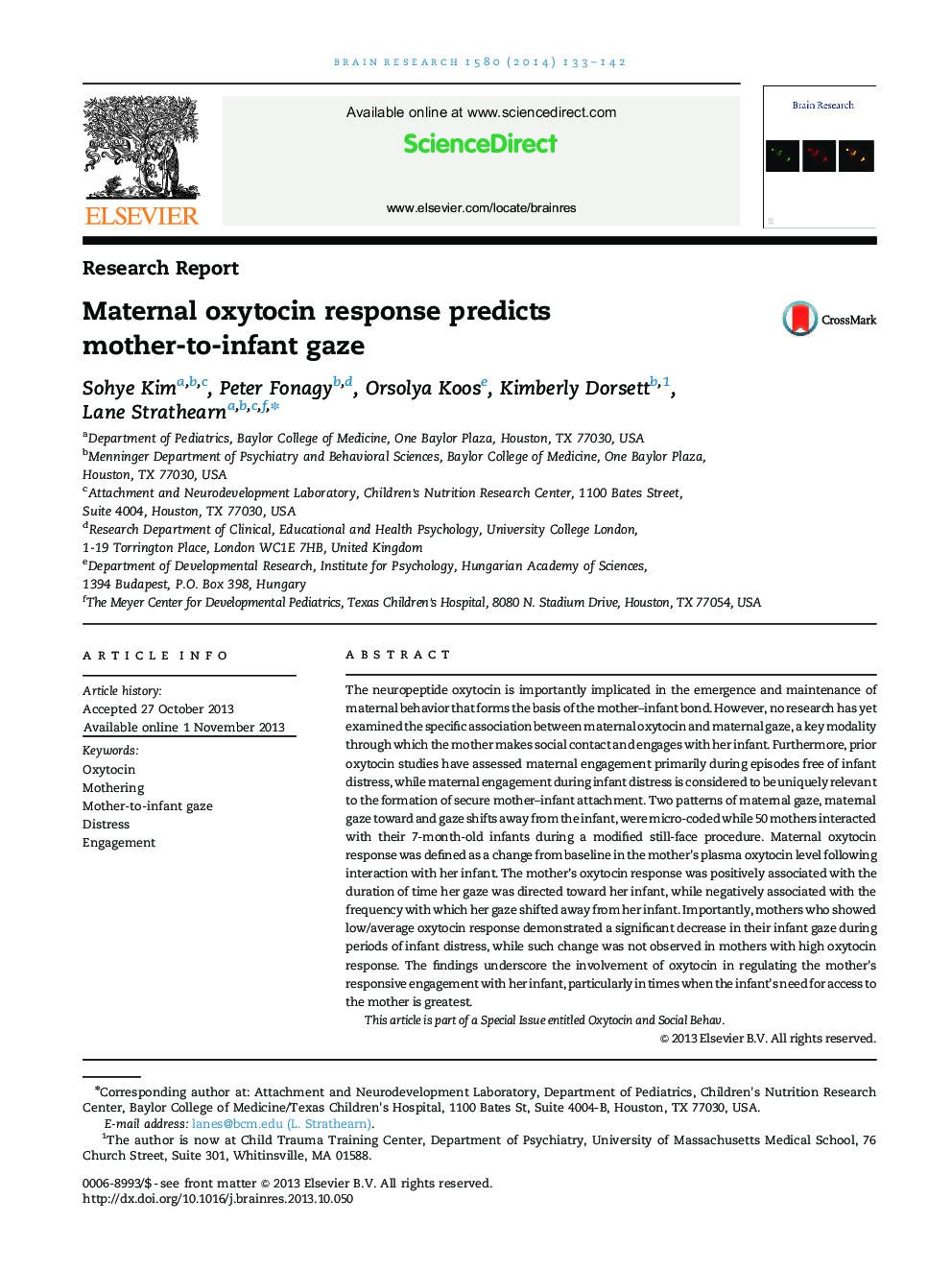| کد مقاله | کد نشریه | سال انتشار | مقاله انگلیسی | نسخه تمام متن |
|---|---|---|---|---|
| 4324126 | 1613859 | 2014 | 10 صفحه PDF | دانلود رایگان |
• We examine association between maternal oxytocin response and mother-to-infant gaze.
• Maternal oxytocin is positively associated with duration of mother-to-infant gaze.
• Maternal oxytocin is negatively associated with maternal gaze shifts from infant.
• Mothers with low/average oxytocin response reduce their gaze during infant distress.
• Mothers with high oxytocin response maintain their gaze during infant distress.
The neuropeptide oxytocin is importantly implicated in the emergence and maintenance of maternal behavior that forms the basis of the mother–infant bond. However, no research has yet examined the specific association between maternal oxytocin and maternal gaze, a key modality through which the mother makes social contact and engages with her infant. Furthermore, prior oxytocin studies have assessed maternal engagement primarily during episodes free of infant distress, while maternal engagement during infant distress is considered to be uniquely relevant to the formation of secure mother–infant attachment. Two patterns of maternal gaze, maternal gaze toward and gaze shifts away from the infant, were micro-coded while 50 mothers interacted with their 7-month-old infants during a modified still-face procedure. Maternal oxytocin response was defined as a change from baseline in the mother's plasma oxytocin level following interaction with her infant. The mother's oxytocin response was positively associated with the duration of time her gaze was directed toward her infant, while negatively associated with the frequency with which her gaze shifted away from her infant. Importantly, mothers who showed low/average oxytocin response demonstrated a significant decrease in their infant gaze during periods of infant distress, while such change was not observed in mothers with high oxytocin response. The findings underscore the involvement of oxytocin in regulating the mother's responsive engagement with her infant, particularly in times when the infant's need for access to the mother is greatest.This article is part of a Special Issue entitled Oxytocin and Social Behav.
Journal: Brain Research - Volume 1580, 11 September 2014, Pages 133–142
